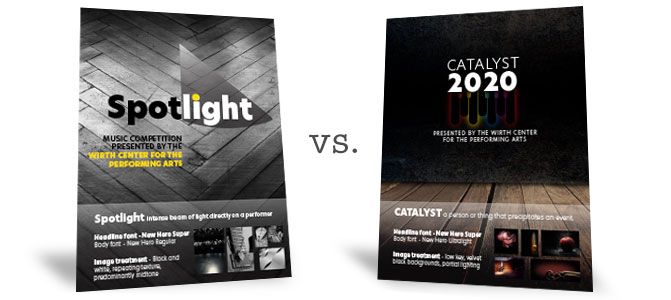A client will often ask for a few options at the beginning of the design process. This can be helpful at the very start of a project when ideas are very rough and the designer’s goal is figuring out the client’s needs and preferences. Anywhere past the comp stage of a project, multiple design directions can toss a major monkey wrench into the process. It’s my firm belief that a designer’s job is to create a single thoughtful solution for the project requirements. Otherwise, the designer is doing a disservice to the client by providing, hopefully, the best design and a slightly less good option.
Long experience has taught me that other problems will crop up when simultaneously walking down a double design path. When I’ve provided multiple designs for client review there are usually parts of each I find appealing. Inevitably, clients will also find bits of both designs they like. This usually puts me in the uncomfortable position of telling the client that the looks are truly disparate and they can’t have both.
Still, multiple design solutions for a single project can be unavoidable. The Wirth Center project began life in a super vague place. The stakeholders wanted to do some sort of distanced event in order to keep everyone safe during the COVID-19 pandemic. We were all over the place on the details. I did my best to funnel the decision-makers toward a specific event with a straightforward goal but ultimately failed. At that point, it became my job to give at least two visual looks that, hopefully, would crystalize the stakeholder’s intentions. I came up with the Wirth Center Spotlight Music Competition and Wirth’s Catalyst 2020.
The clients very much like both looks but enthusiasm for the project finally petered out in part because, as a designer, I failed to help the client find a single goal for the project. Still, I enjoyed the process and conversation with the clients. My work, though fruitless, made a good impression on the clients and may eventually lead to more work.

